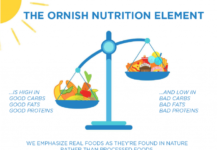Food allergies in children are not to be taken lightly, as they can have severe consequences if not appropriately managed and treated.
Approximately 5% of Children Suffer from Food Allergies

Food allergies result from the body’s immune response to specific substances in food known as allergens.
Research indicates that around 5% of children grapple with food allergies, and this figure is on the rise globally, particularly among young children. A child’s risk of allergies can often be predicted based on their parents’ allergic history. For instance, if both parents have allergies, the child faces a 50-80% risk, whereas if one parent has allergies, the risk is about 20-40%. Even when neither parent has allergies, 5-15% of children may still be at risk.
Recent studies suggest that up to 40% of young children are susceptible to food allergies, a rate that diminishes with age. Environmental factors, dietary habits, and individual lifestyles contribute to this variability.
Proteins in Food Are the Primary Culprits for Food Allergies in Children
Food allergies in children primarily stem from proteins found in various foods. The child’s immune system and gastrointestinal tract are still developing, making them vulnerable to allergenic foods that can easily trigger allergies.
Food allergic reactions often manifest as symptoms such as erythema, dermatitis, urticaria, eczema, abdominal pain, and digestive issues. In severe cases, food allergies can lead to bronchial asthma exacerbations or anaphylactic shock, posing a high risk of fatality.

Recognizing Food Allergy Symptoms in Children
Parents should be vigilant for signs of food allergies, particularly if symptoms appear within two hours of eating:
- Swelling of the lips, tongue, or mouth.
- Diarrhea or vomiting.
- Rash.
- Itchy red skin (especially when the child has eczema).
- Less common symptoms may include a sore throat, stuffy or runny nose, or sneezing.
In rare cases, food allergies can induce life-threatening anaphylactic reactions, characterized by symptoms such as shortness of breath, difficulty swallowing, cardiovascular collapse, and changes in perception (irritability, confusion, or stupor).
Children with a history of eczema or asthma are at higher risk of developing food allergies. Food allergies can also trigger asthma attacks, migraines, and stomachaches in children with asthma.
The Most Common Food Allergies

Parents often wonder which foods are most likely to trigger allergies in children. While this varies from child to child, common culprits include peanuts, eggs, cow’s milk, soy milk, and wheat, accounting for about 80% of food allergies. Additionally, fish, shrimp, crab, and oysters contribute to over 95% of allergic reactions.
Fortunately, most children tend to outgrow their food allergies as they grow older. Research indicates that over half of children with food allergies in their first year will typically overcome these allergies by age 2-3. Some allergies, such as those to milk, may resolve even sooner, while others, like allergies to beans, fish, and shellfish, may persist.
Managing Food Allergies in Children
When a child exhibits food allergies, it is crucial for parents to identify and eliminate the allergen from their diet. This often necessitates dietary changes and increased caution in food selection.
During the weaning process, parents should introduce new foods gradually to monitor and detect any allergic reactions. Starting with less allergenic foods like rice and tubers is recommended.

For children who experience hives and acute laryngitis after consuming specific foods, such as shrimp, eggs, fish, or beans, avoidance of these triggers is paramount, as laryngitis symptoms can be life-threatening.
Parents should seek consultation with an allergist when they suspect their child has a food allergy. Medical professionals can conduct examinations, inquire about the child’s health, and perform specialized tests to provide specific guidance and instructions.
Preventive measures are essential, as children with food allergies at a young age face a higher risk of developing other allergic conditions later in life, such as allergic rhinitis, eczema, or bronchial asthma. To reduce these risks, parents can follow allergy prevention methods through diet, such as exclusive breastfeeding for at least six months and eliminating allergenic foods from the mother’s diet.
Conclusion
Food allergies in children pose substantial risks and can significantly impact their lives. Proper management, treatment, and collaboration with medical experts are essential to ensure safety and improve the quality of life for affected children.










